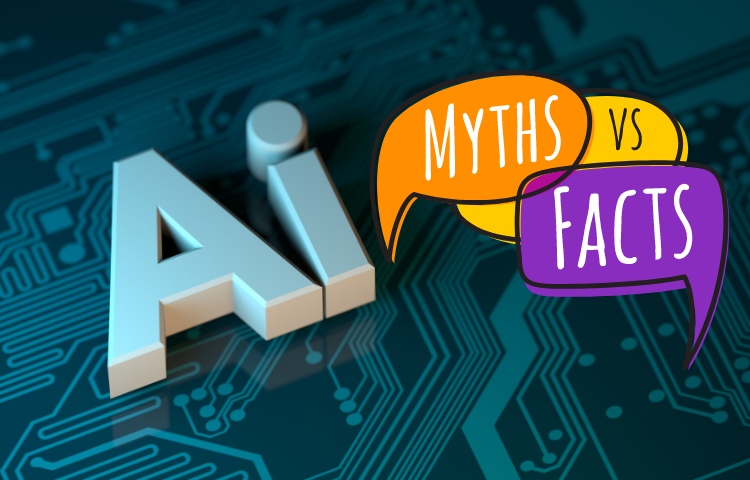

While AI holds incredible potential, it’s also shrouded in misconceptions that range from the amusingly absurd to the dangerously misinformed. Some of these are shaped by the depiction of AI in movies and entertainment, while others are perpetuated by fear or lack of knowledge. As builders of AI systems for businesses, Quantilus strives to educate businesses on the best utilization of AI. To achieve this, businesses must grasp the realities of AI: how it operates, its capabilities and limitations, and the indispensable role that human oversight plays in crafting effective and ethically responsible AI systems.
To this end, our team met to discuss myths we often run across and curated the top 10 we want to dispel so our prospects, clients, and the world can understand the reality. These myths not only affect perceptions but also impact decision-making processes within businesses. Through debunking these myths, we aim to empower businesses to harness the true potential of AI while dispelling any lingering misconceptions that may hinder progress. So, let’s dive into the 10 myths surrounding AI, shedding light on the truths that lie beneath the surface.
MYTH: AI is sentient and self-aware.
Fact: AI systems lack consciousness, self-awareness, or the cognitive ability to think independently. They operate based on programmed algorithms and data provided by humans.
MYTH: AI can solve a problem without understanding the problem itself.
Fact: AI excels in specific tasks but lacks a broad, general intelligence like humans. Specialized AI models are designed for particular use cases and may struggle with tasks outside their scope.
MYTH: AI understands context like humans.
Fact: AI lacks the nuanced understanding of context that humans possess. It relies on patterns and correlations in data but may misinterpret situations that require deep contextual understanding. Hence, humans should not be taken completely out of processes.
MYTH: AI is infallible.
Fact: AI systems can make mistakes, especially if the training data is inaccurate or biased, or the algorithms are not designed robustly. They are not immune to errors and can produce unexpected results.
MYTH: Once an AI system is built, it can work in isolation.
Fact: AI systems require human input for development, training, and ongoing improvement. Human oversight is also crucial to address ethical concerns and biases and to ensure responsible AI use.
MYTH: AI operates independently of human values.
Fact: AI reflects the values embedded in its programming and the data it was trained on. Any ethical concerns or biases in AI typically reflect human choices and inputs.
MYTH: AI eliminates the need for human expertise.
Fact: While AI can automate certain tasks, it doesn’t replace the need for human expertise, judgment, and decision-making. AI is intended to support and enhance human capability by tackling rote tasks and allowing humans to focus on higher-value efforts.
MYTH: AI has emotions.
Fact: AI lacks emotional experiences, feelings, and subjective states. It can be trained to identify and simulate emotion based on programmed responses to certain inputs.
MYTH: AI has inherent motivations.
Fact: AI systems don’t have their own desires, goals, or motivations. They act based on programmed instructions and are driven by the objectives set by their human developers.
MYTH: AI replaces human creativity.
Fact: While AI can assist in creative tasks, it does not possess true creativity or original thought. Human intuition, innovation, and the ability to think abstractly go beyond the capabilities of current AI systems.
Debunking myths about artificial intelligence is essential for responsible use of this game-changing technology. Clearing up misconceptions helps businesses harness AI to boost innovation, efficiency, and growth while reducing risks. At Quantilus, we aim to provide the clarity companies need in the complex landscape of AI. We’re committed to challenging misinformation and promoting understanding, which is key to progress. If you have any questions or wish to discuss concerns of your own, feel free to reach out to us.
WEBINAR